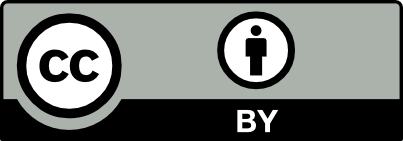[Un test linéaire pour la contrôlabilité non linéaire globale]
It is known that if a nonlinear control affine system without drift is bracket generating, then its associated sub-Laplacian is invertible under some conditions on the domain. In this note, we investigate the converse. We show how invertibility of the sub-Laplacian operator implies a weaker form of controllability, where the reachable sets of a neighborhood of a point have full measure. From a computational point of view, one can then use the spectral gap of the (infinite-dimensional) self-adjoint operator to define a notion of degree of controllability. An essential tool to establish the converse result is to use the relation between invertibility of the sub-Laplacian to the controllability of the corresponding continuity equation using possibly non-smooth controls. Then using Ambrosio–Gigli–Savaré’s superposition principle from optimal transport theory we relate it to controllability properties of the control system. While the proof can be considered of the Perron–Frobenius type, we also provide a second dual Koopman point of view.
Il est bien établi en théorie du contrôle géométrique que si un système de contrôle non linéaire affine sans dérive satisfait la condition de génération par les crochets, alors le sous-Laplacien associé est inversible sous certaines hypothèses sur le domaine. Dans cette note, nous explorons la réciproque de cette affirmation. Plus précisément, nous montrons que l’inversibilité de l’opérateur sous-Laplacien entraîne une forme affaiblie de contrôlabilité, dans laquelle les ensembles accessibles à partir d’un voisinage d’un point sont de mesure pleine. D’un point de vue analytique, cette observation permet d’introduire une notion de degré de contrôlabilité en exploitant l’écart spectral de l’opérateur autoadjoint associé, qui opère dans un cadre de dimension infinie. L’un des outils clés pour établir cette réciproque repose sur le lien entre l’inversibilité du sous-Laplacien et la contrôlabilité de l’équation de continuité associée, même en présence de contrôles non réguliers. En appliquant ensuite le principe de superposition d’Ambrosio–Gigli–Savaré issu de la théorie du transport optimal, nous établissons un lien direct entre ces résultats et les propriétés de contrôlabilité du système. La preuve peut être interprétée comme une généralisation du type Perron–Frobenius, mais nous proposons également une seconde approche duale en adoptant une perspective basée sur l’opérateur de Koopman.
Accepté le :
Publié le :
Keywords: Control theory, sub-Laplacians, controllability
Mots-clés : Théorie du contrôle géométrique, sous-Laplaciens, contrôlabilité
Karthik Elamvazhuthi 1
 CC-BY 4.0
CC-BY 4.0
@article{CRMATH_2025__363_G4_365_0,
author = {Karthik Elamvazhuthi},
title = {A linear test for global nonlinear controllability},
journal = {Comptes Rendus. Math\'ematique},
pages = {365--375},
publisher = {Acad\'emie des sciences, Paris},
volume = {363},
year = {2025},
doi = {10.5802/crmath.720},
language = {en},
}
Karthik Elamvazhuthi. A linear test for global nonlinear controllability. Comptes Rendus. Mathématique, Volume 363 (2025), pp. 365-375. doi : 10.5802/crmath.720. https://comptes-rendus.academie-sciences.fr/mathematique/articles/10.5802/crmath.720/
[1] The Koopman operator in systems and control—concepts, methodologies and applications (Alexandre Mauroy; Igor Mezić; Yoshihiko Susuki, eds.), Lecture Notes in Control and Information Sciences, 484, Springer, 2020, xxiii+556 pages | DOI | MR | Zbl
[2] Control theory from the geometric viewpoint, Encyclopaedia of Mathematical Sciences, 87, Springer, 2004, xiv+412 pages | DOI | MR
[3] Gradient flows in metric spaces and in the space of probability measures, Lectures in Mathematics, ETH Zürich, Birkhäuser, 2005, viii+333 pages | MR
[4] Sub-Riemannian structures on groups of diffeomorphisms, J. Inst. Math. Jussieu, Volume 16 (2017) no. 4, pp. 745-785 | DOI | MR | Zbl
[5] Young measures, superposition and transport, Indiana Univ. Math. J., Volume 57 (2008) no. 1, pp. 247-275 | DOI | MR | Zbl
[6] Hörmander operators, World Scientific, 2023, xxviii+693 pages | MR
[7] Approximately controllable finite-dimensional bilinear systems are controllable, Syst. Control Lett., Volume 157 (2021), 105028, 6 pages | MR | Zbl
[8] The Lax–Milgram theorem. A detailed proof to be formalized in Coq (2016) | arXiv
[9] Denoising diffusion-based control of nonlinear systems (2024) | arXiv
[10] Lipschitz continuity, global smooth approximations and extension theorems for Sobolev functions in Carnot–Carathéodory spaces, J. Anal. Math., Volume 74 (1998) no. 1, pp. 67-97 | DOI | MR | Zbl
[11] Linear systems theory, Princeton University Press, 2018, xvi+330 pages | MR
[12] Hypoelliptic second order differential equations, Acta Math., Volume 119 (1967), pp. 147-171 | DOI | MR | Zbl
[13] Nonlinear control systems: an introduction, Lecture Notes in Control and Information Sciences, 72, Springer, 1985, vi+297 pages | DOI | MR
[14] A nonholonomic Moser theorem and optimal transport, J. Symplectic Geom., Volume 7 (2009) no. 4, pp. 381-414 | DOI | MR | Zbl
[15] Chaos, fractals, and noise: Stochastic aspects of dynamics, Applied Mathematical Sciences, 97, Springer, 1994, xiv+472 pages | DOI | MR
[16] The Neumann problem for sub-Laplacians on Carnot groups and the extension theorem for Sobolev spaces, Ann. Mat. Pura Appl., Volume 180 (2001), pp. 1-25 | DOI | MR | Zbl
[17] Hypoelliptic differential operators and nilpotent groups, Acta Math., Volume 137 (1976) no. 3-4, pp. 247-320 | DOI | MR | Zbl
[18] Lyapunov measure for almost everywhere stability, IEEE Trans. Autom. Control, Volume 53 (2008) no. 1, pp. 307-323 | DOI | MR | Zbl
Cité par Sources :
Commentaires - Politique



